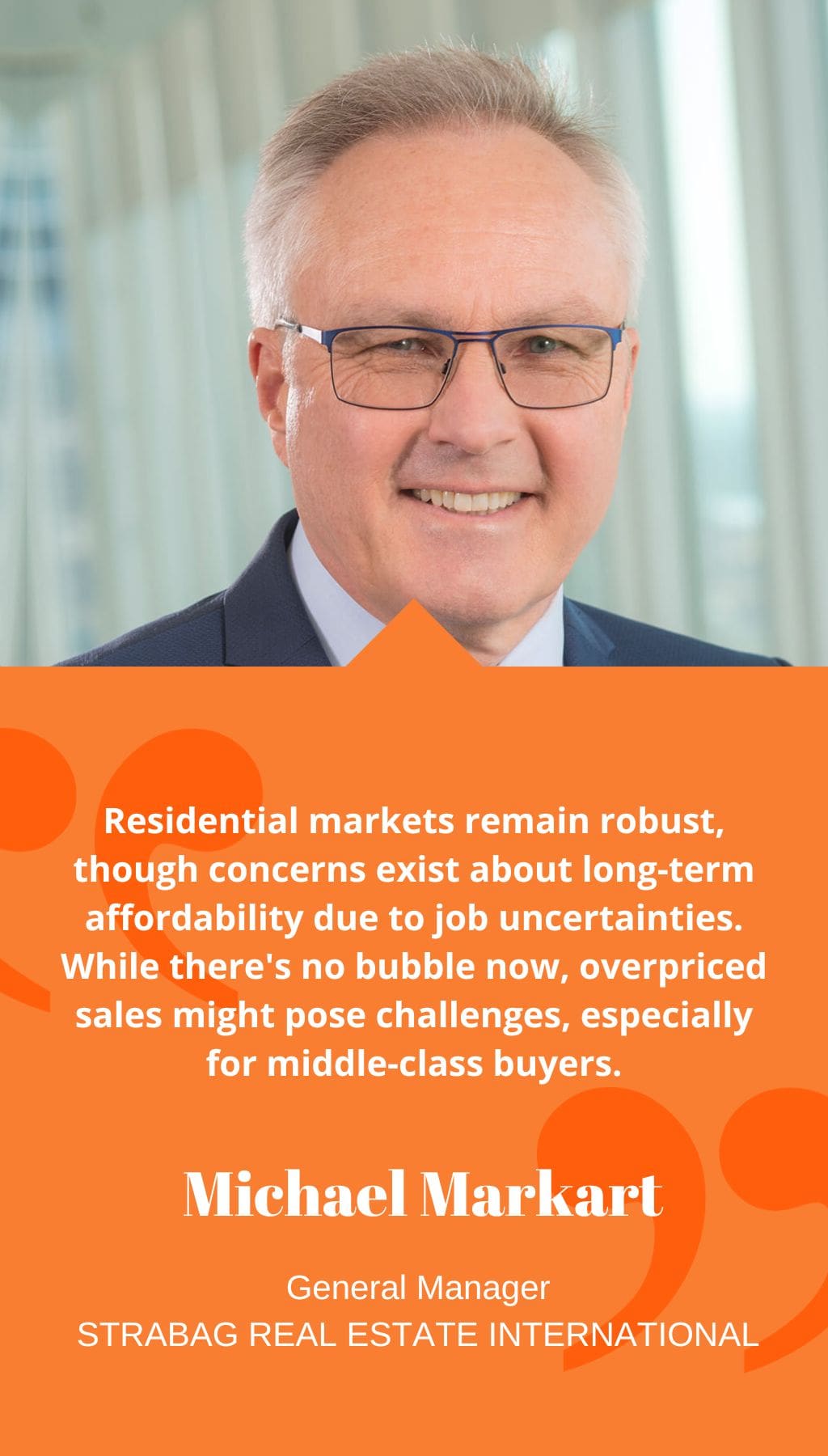
- Romania | 3 May 2021

STRABAG is widely recognized for its construction expertise but less so for its Real Estate division. How does this division fit into the broader company picture?
STRABAG Real Estate boasts a rich legacy spanning over half a century in Germany, renowned for its landmark projects like Berlin’s Upper West or Tanzende Türme in Hamburg. Our entry into Central and Eastern Europe commenced in Poland in 2014, followed by Romania in 2015. Despite our presence, there’s room for growth and improvement in both markets. Our activities span office, hotel, residential, and retail developments, tailored to local market nuances and our teams’ experience.
The pandemic forced adaptations in plans. How is STRABAG Real Estate countering its effects?
Ensuring project feasibility, a compelling narrative, and a solid Plan B are our project prerequisites. Amid the pandemic, we’re exploring alternatives like changing asset classes, property sales, or patience for market stability. We maintain an optimistic outlook, preserving locations with high potential and evaluating other options.
What sustains optimism despite these challenges?
Residential markets remain robust, though concerns exist about long-term affordability due to job uncertainties. While there’s no bubble now, overpriced sales might pose challenges, especially for middle-class buyers.
Is residential rental a viable solution?
Residential-for-rent models are gaining traction. In Poland, it’s about 5-8%, unofficially higher at 15%, yet relatively uncommon in CEE countries. Younger generations, facing less affordable property ownership, lean towards renting.
Comparing Romania and Poland’s real estate markets, what similarities and differences stand out?
Both exhibit a growing trend towards residential-for-rent. Bucharest’s juxtaposition of historical and modern buildings stands out. In contrast, Warsaw, post-WWII reconstruction, fosters large-scale modern developments. Poland’s office space surpasses Romania’s modern stock, reflecting a decade’s difference. Administrative differences also prevail, with Poland offering clearer, developer-friendly guidelines compared to Romania’s wider interpretations.
Given the Real Estate division’s smaller size within STRABAG, what are the future visions and growth plans?
Poland aims to expand projects in Warsaw and venture into secondary markets. In Romania, focus shifts to residential development following missed land plot opportunities. Growth isn’t a primary goal; we prioritize maintaining quality, delivering innovative, sustainable, and efficient products to sustain market positioning and success.














